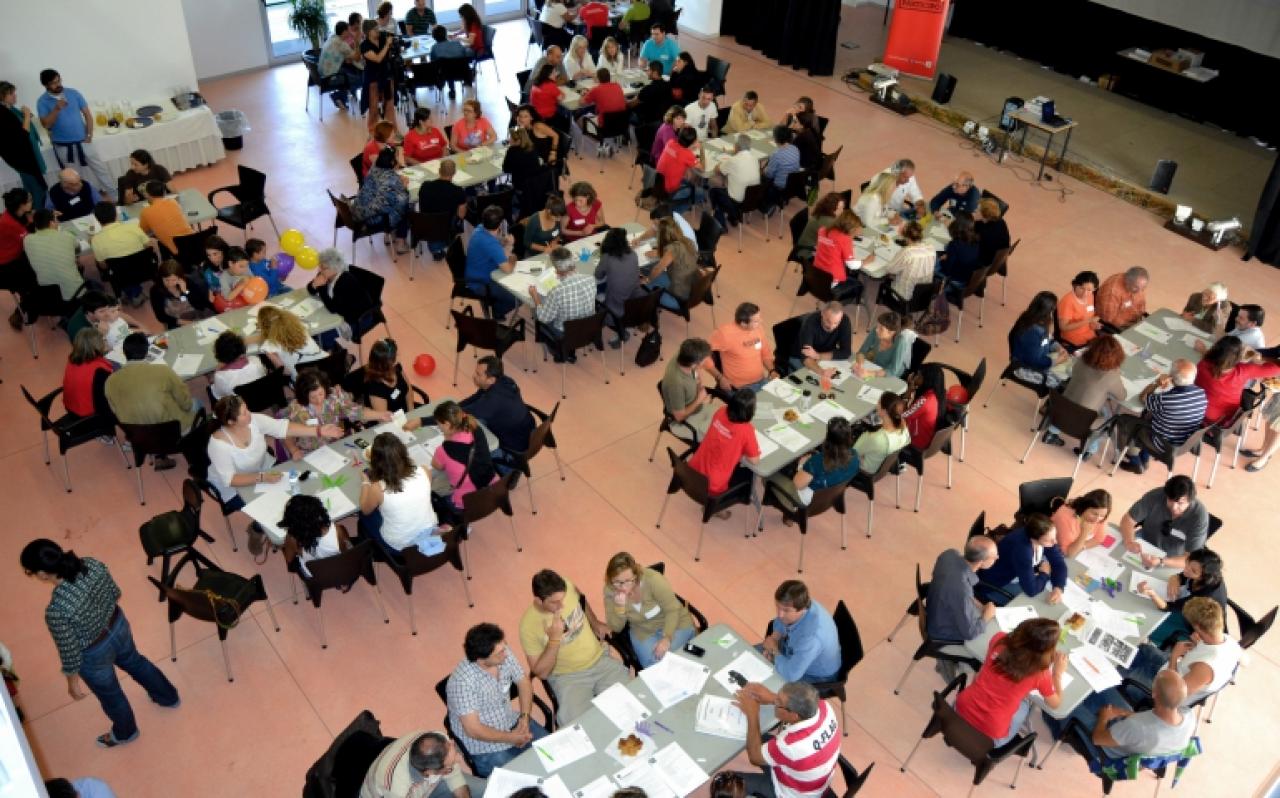Eddy Adams, URBACT Programme Expert investigates Cascais (PT) home to one of Europe’s most effective Participatory Budget (PB) models, awarded the URBACT Good Practice label for Bridging the Gap. The city is building on this through a range of further tools to support and encourage citizen participation.
Most city officials would be satisfied to get one of Europe’s most successful Participatory Budget (PB) models up and running. But Isabel Xavier isn’t like most city officials. Despite the success of the Cascais Participatory Budget, she sees it as part of a wider process to embed and sustain democratic processes in the city. As she puts it: “Participatory Budget is a product. Sooner or later it’s going to die – and that’s ok. It will have a moment, which will pass over, but for us it’s a platform to help generate other things.”
In the meantime, the Participatory Budget model in Cascais continues to evolve. Initiated in 2011, in response to declining rates of local electoral participation, it has the largest proportion of a city’s investment budget (around 15%) of any model in Europe. But last year’s evaluation identified key groups who were not getting involved, including some of the most vulnerable sections of the community.
Reaching all citizens
In response, specific measures were taken to engage with people with physical and mental disabilities. These included afternoon events, when carers were more available. The city also designed targeted preparation sessions, to ensure that they could actively contribute. The results have been encouraging, with disabled people not only voting, but also proposing projects – like the concept for a sensory garden from a group of visually impaired citizens,
The city’s active outreach has also extended to people in residential care homes, as well as to the long-term unemployed, who are often socially isolated. They have also lowered the participation age to twelve, and have ensured that these children vote separately from their parents, to ensure their independence.
Focus on young people
Young people also remain actively involved through the schools dimension of the PB model. Each school has a EUR 10,000 budget for its own selected ideas. Beyond that, young people can propose suggestions through the mainstream budget, and three have been selected in recent years. They were digital bus stops – WIFI enabled shelters with solar power charging sockets – ‘social benches’ where young people can come together (and also charge their devices) and a Festival of Youth Cinema.
These proposals from young people and disabled groups are part of the reason why new sections of the community keep coming forward with fresh ideas. In the past year, 50% of proposal presenters were doing it for the first time.
Despite this, it seems that this phenomenal shift in civic participation hasn’t translated into higher rates of electoral participation. Isabel is quite relaxed about this – and not so surprised. She notes that people remain largely disinterested in formal politics, but expects that the work in schools will eventually filter through:
“We don’t think we can see the electoral impact yet. The Cascais Participatory Budget is important, but not structural. The wider work in schools is more structural, and I think that’s eventually going to make the difference to voting rates.”
This "structural" work in schools has a number of strands. An important element involves the Mayor and Deputy going into schools to actively listen to young people through a programme called "So, tell us" in primary schools and the "Voice of Youth" in secondary schools.
The city is also finding other ways to make young people more aware of how the city machinery functions. One is to use the ‘City Masterplan’ as a focal point for discussions with geography students. This requires planners to explain their ideas in non-specialist ways, whilst educating students on the planning process.
Unexpected results amongst professionals and politicians
This development stems from one of the most interesting – and perhaps surprising – outcomes of the whole Participatory Budget process. This has been a growing realisation amongst professionals of the value of active citizen engagement. Isabel Xavier notes that “Participatory Budget has really helped shift attitudes amongst technicians and politicians about opening up and involving citizens. They have been surprised how much people know – and how interested they are.”
The ripple effect of this is taking place in different parts of local government machinery. The Health Board has initiated a mechanism to elect two citizen lay-people within its senior decision making body. At the same time the Education Department is developing ways to involve students and teachers in its structures.
Clearly, the city’s Participatory Budget has not been an end in itself. Rather, it is proving to be a catalyst for a wider process of change at the local level. This is not only giving citizens a better understanding of how decisions are made, but it is also providing opportunities to assume an active role.
The city’s work has already been recognised as an URBACT Good Practice and its work was showcased in the first URBACT City Lab, focusing on participation. But it continues to push the boundary, not only in the city, but increasingly on a global level. In October 2019 it will host the second Smart Citizenship Academy, bringing experts on all aspects of democracy to learn from one another. BREXIT, Bolsonaro and Artificial Intelligence will all be under the microscope, whilst participants will generate the first ever atlas of Participatory Budgets.
Cascais continues to grow its reputation as a laboratory for democracy and participation, and remains an inspiring example of how medium-sized cities can take the lead.


